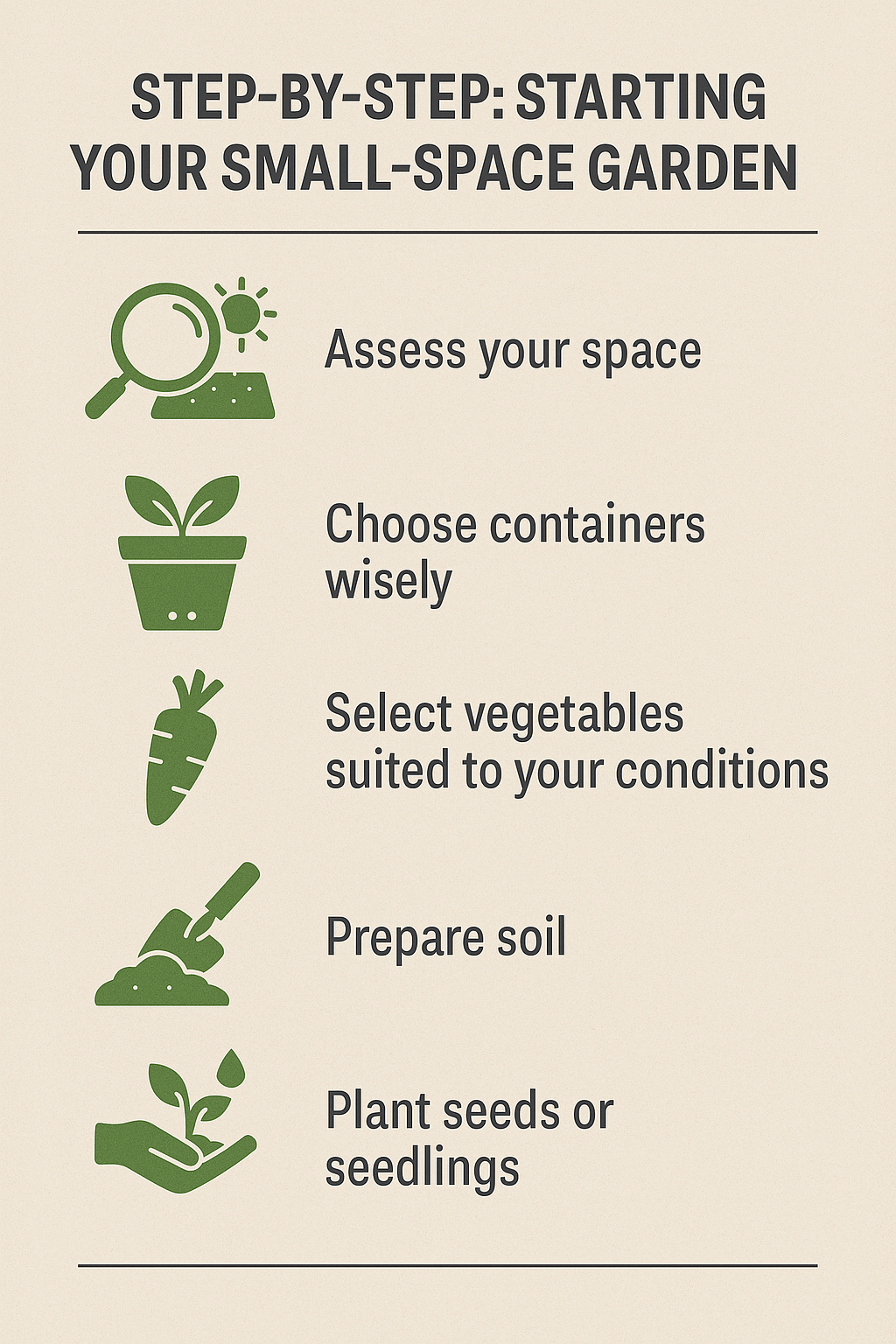Urban living and limited outdoor areas don’t have to stop you from growing your own food. In fact, the best vegetables to grow in small spaces are often easier to manage and can produce impressive yields even in containers or tiny backyard plots. Whether you have a balcony, a windowsill, or a compact patio, this guide will show you exactly which vegetables to grow, how to do it, and how to get the most out of your small garden.
Why Choose Compact Vegetable Gardening?
Gardening in small spaces is not only possible—it’s highly rewarding. With the right planning and choice of vegetables, even a few square feet can provide a regular supply of fresh, healthy produce.
Benefits of small-space vegetable gardening:
- Saves money on groceries
- Reduces food waste
- Promotes healthy eating habits
- Brings nature into your daily routine
- Ideal for beginners and urban dwellers
Let’s dive into the top vegetable choices and how to grow them effectively in tight areas.
Top 8 Vegetables Perfect for Small Spaces
1. Lettuce and Salad Greens
Lettuce, arugula, spinach, and kale are fast-growing, space-efficient, and ideal for container gardening.
How to grow:
- Use shallow containers with good drainage.
- Sow seeds directly and thin out as they grow.
- Harvest outer leaves to encourage continuous growth.
Pro tip: Choose cut-and-come-again varieties for maximum harvest.
2. Radishes
Radishes mature in just 3–4 weeks and can thrive in small pots or window boxes.
How to grow:
- Sow seeds directly into containers.
- Space seeds 1 inch apart.
- Keep the soil moist and harvest early for best flavor.
3. Cherry Tomatoes
Compact, high-yielding, and ideal for hanging baskets or balcony containers.
How to grow:
- Choose dwarf or patio varieties.
- Use deep containers (at least 12 inches).
- Provide full sun and support with stakes or cages.
4. Peppers (Bell or Chili)
Peppers thrive in pots and offer a colorful, nutritious harvest.
How to grow:
- Use containers 10–12 inches deep.
- Place in full sun for 6+ hours daily.
- Water regularly and fertilize every two weeks.
5. Green Beans (Bush Varieties)
Bush beans are compact, quick to mature, and don’t require much vertical space.
How to grow:
- Sow directly into large pots or raised beds.
- Use rich, well-draining soil.
- Harvest often to encourage new pods.
6. Carrots (Short Varieties)
Nantes or baby carrot types work well in containers with deep, loose soil.
How to grow:
- Use pots at least 10 inches deep.
- Space seeds thinly and water consistently.
- Thin seedlings once they sprout for best root growth.
7. Spinach
A fast-growing leafy green that thrives in containers during cooler seasons.
How to grow:
- Choose a wide container with good drainage.
- Keep the soil moist but not soggy.
- Harvest baby leaves for salads or wait for mature bunches.
8. Herbs (Bonus Tip)
While not vegetables, herbs like basil, parsley, and chives are perfect companions and maximize your harvest potential in limited spaces.
How to Maximize Yields in Limited Space
Growing vegetables in small areas isn’t just about choosing the right crops—it’s also about using your space wisely. Here are key techniques to increase your harvest without needing more ground.
Use Vertical Space
- Install trellises or wall planters for climbing crops like beans or peas.
- Use shelves or stacking pots to increase planting area.
Companion Planting
- Grow complementary plants together to enhance growth and deter pests (e.g., tomatoes with basil).
Succession Planting
- Once one crop finishes, replant with another to make use of the growing season efficiently.
Container Gardening Tips
- Choose the right size pots (deeper for root crops, wider for leafy greens).
- Use high-quality potting mix with compost.
- Water consistently but avoid overwatering—most pots drain faster than garden beds.
Common Mistakes to Avoid
Even with limited space, you can still encounter challenges. Avoid these common beginner mistakes:
- Overcrowding plants: Leads to competition for light and nutrients.
- Poor soil quality: Invest in quality soil for better root development.
- Ignoring sunlight needs: Most vegetables need 6–8 hours of sun daily.
- Using undersized containers: Can stunt growth or dry out too quickly.
Step-by-Step: Starting Your Small-Space Garden
- Assess your space: Observe how much sun and wind it gets.
- Choose containers wisely: Opt for pots with drainage holes and the right depth.
- Select vegetables suited to your conditions: Refer to the list above.
- Prepare soil: Use potting mix enriched with compost.
- Plant seeds or seedlings: Follow spacing and depth guidelines.
- Water and fertilize regularly: Keep a consistent routine.
- Monitor and maintain: Watch for pests, prune when needed, and harvest frequently.

Want to make your garden more sustainable? Don’t miss our tips on home gardening ideas using recycled materials to reduce waste and grow smart.
Conclusion: Start Growing Now!
You don’t need a big backyard to grow your own vegetables. With the right selection and smart techniques, you can create a thriving garden on a small patio, balcony, or even windowsill. Start today by choosing one or two vegetables from this list and set up a simple container garden. You’ll be amazed by how much fresh produce you can grow in even the smallest of spaces.
Ready to grow your own food? Start with one container and see how rewarding small-space gardening can be!
FAQ – Frequently Asked Questions
What vegetables are easiest to grow in containers?
Lettuce, radishes, spinach, and cherry tomatoes are among the easiest and most productive.
How much sun do I need for small-space gardening?
Most vegetables require at least 6 hours of direct sunlight per day.
Can I grow vegetables indoors?
Yes. Leafy greens and herbs grow well indoors with adequate light—consider using grow lights if natural light is limited.
Need the right tools to start your container garden? Check out this complete vegetable gardening kit on Amazon — it includes pots, soil, seeds, and tools perfect for small spaces.
